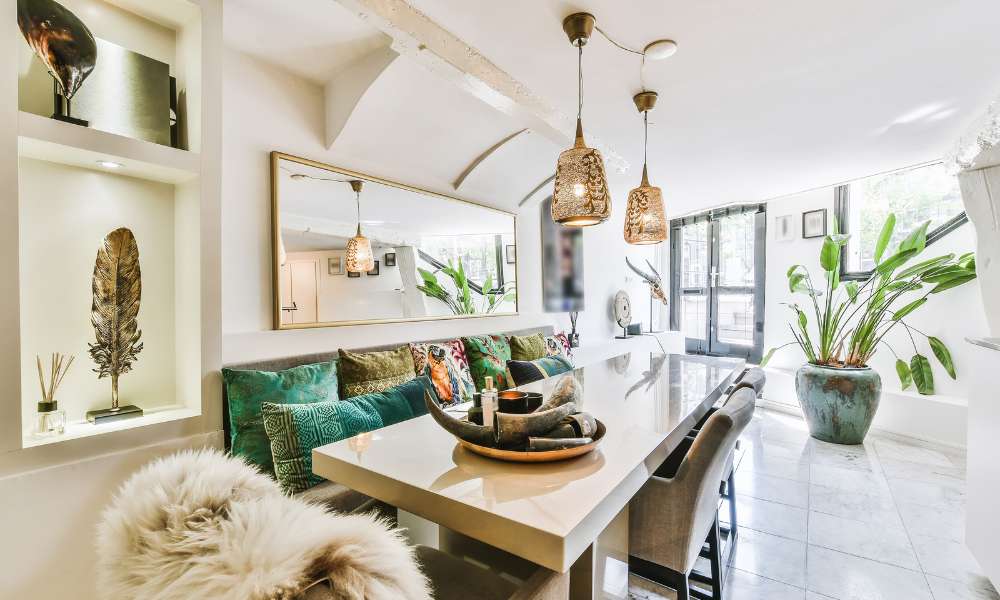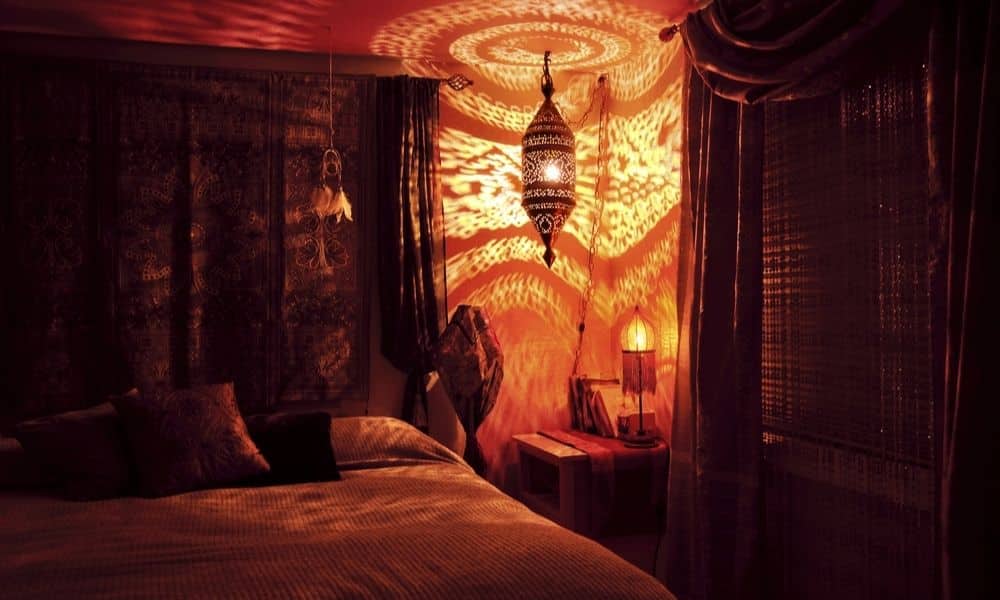Choosing the right height for a light fixture above your dining table is more than just a decorative decision—it’s essential for creating the perfect ambiance and functionality in your dining area. The height at which the light hangs can influence not only the mood and aesthetics of the room but also the comfort and visibility of those gathered around the table. Whether it’s a cozy family dinner or a grand dinner party, the correct placement of your lighting fixture ensures that the space is inviting and well-lit.
In this article, we will explore the standard heights recommended for hanging lights over dining tables, while also considering the factors that might lead you to adjust these standards to better suit your specific dining environment. From the size of your table to the height of your ceilings, every detail matters in achieving the perfect balance and harmony in your dining room lighting.
1. Understanding the Standard Lighting Height
The general standard for the height of a light fixture above a dining table is typically set between 30 to 36 inches from the table surface. This measurement is based on the average eye level of seated individuals, ensuring that the light is neither too high to be ineffective nor too low to cause discomfort or obstruction. This standard height helps create an intimate setting where the light focuses effectively on the table without overwhelming the diners with glare or heat. Architects and interior designers have adopted this guideline widely, making it a common practice in both residential and commercial dining settings. Adhering to this standard also facilitates the uniform distribution of light, which enhances both the functionality and aesthetics of dining spaces, making meals more enjoyable and visually appealing.
2. Factors Influencing Light Height
Several factors can influence the ideal height of a light fixture above a dining table, necessitating adjustments to the standard height. Firstly, the size of the dining table plays a crucial role; larger tables might require higher or multiple lights to ensure an even distribution of light across the entire surface. Secondly, the ceiling height of the room also dictates how high or low you should hang your light fixture. In rooms with high ceilings, lights can be hung slightly higher to maintain a balanced aesthetic, whereas lower ceilings might necessitate closer placements. Lastly, the size and style of the light fixture itself affect its optimal hanging height. Larger, more ornate fixtures typically demand more space and might need to be positioned higher, while sleeker, minimalist designs can be placed closer to the dining surface without overwhelming the space.
3. Impact of Table Dimensions
The dimensions of your dining table significantly impact how you should position and adjust the height of your light fixture. For longer tables, a single central light may not provide adequate illumination across the entire surface. In such cases, consider using multiple smaller fixtures or a larger, elongated chandelier that mirrors the table’s shape. This ensures balanced lighting that reaches all areas of the table without casting unwanted shadows. For wider tables, positioning the lights directly above the center at a height that prevents head obstruction yet offers sufficient illumination is crucial. Aligning multiple fixtures requires careful spacing; ensure they are evenly distributed and hang at uniform heights to create a harmonious visual impact and effective lighting. These adjustments not only enhance functionality but also elevate the aesthetic appeal of your dining space.
4. Ceiling Height Considerations
When dealing with unusually low or high ceilings, adjustments to the light fixture’s height are necessary to maintain both aesthetics and functionality. For low ceilings, the fixture should be hung closer to the ceiling to maximize headroom while still providing adequate light to the table. Conversely, high ceilings allow more flexibility, but hanging the light too high might reduce its effectiveness. To counteract this, use longer chains or suspension rods to bring the light closer to the table surface. In rooms with vaulted or cathedral ceilings, achieving a balanced look requires aligning the light fixture with the room’s highest central point, ensuring it remains a focal element without appearing disconnected from the dining area. Employing adjustable-length fixtures can also help accommodate the varying angles and heights of these complex ceiling structures, enhancing both practical lighting needs and decorative harmony.
5. Choosing the Right Light Fixture
Selecting the right light fixture for your dining area is crucial, as it not only affects the room’s overall aesthetics but also dictates the appropriate height placement. Chandeliers are a popular choice for formal dining rooms, offering elegance and a central focal point. These fixtures typically require a higher placement to highlight their intricate designs without overpowering the space. Pendants, on the other hand, are versatile and can be hung lower to create a more intimate and cozy atmosphere, making them suitable for both casual and formal settings. The choice of fixture size and style directly influences how high or low it should be positioned. For instance, a large, statement-making chandelier might be set higher to enhance visibility and room balance, whereas smaller pendants can be adjusted closer to the dining surface to concentrate light exactly where it’s needed.
6. Lighting for Different Dining Experiences
The ambiance of your dining space can be significantly shaped by how you adjust the lighting, particularly when transitioning between casual and formal dining settings. For casual meals, a lower-hanging light fixture can create a warm, inviting atmosphere, making the space feel more intimate and relaxed. In contrast, formal dining often benefits from slightly higher-placed lighting, which adds a sense of grandeur and spaciousness appropriate for more solemn occasions. Additionally, incorporating dimmable lighting options can greatly enhance the dining experience, allowing for the adjustment of light intensity to match the mood or time of day. This flexibility not only alters the atmosphere but also adds a layer of customization that can make any dining experience feel special and tailored to the occasion. Effective use of lighting adjustments and dimmable features can transform the dining area into a versatile space for all types of gatherings.
7. Installation Tips
Installing a light fixture at the correct height above your dining table is a straightforward process that requires some basic tools and safety precautions. Begin by ensuring the power is turne off at the breaker box to prevent any electrical hazards. You’ll need a measuring tape, a ladder, a screwdriver, and possibly wire strippers and pliers. Start by measuring the distance from the ceiling to the desired height above the table—typically 30 to 36 inches. Mark this spot on the electrical box where the fixture will hang. Attach the mounting bracket to the electrical box using screws.
Next, connect the wires from the light fixture to your home’s wiring—typically matching the color-coded wires and securing them with wire nuts. Lift the fixture to the bracket and secure it in place. Finally, restore power and test the fixture to ensure it is working properly. This method ensures that your light is both aesthetically pleasing and functionally safe.
8. Adjusting Existing Lighting
Adjusting the height of an existing light fixture can refresh the look of your dining area without the need for a complete replacement. Begin by turning off the electricity at the circuit breaker to ensure safety. You will need a ladder, a screwdriver, and possibly adjustable pliers. If your fixture is suspende by a chain or cord, shorten or lengthen it as needed by adjusting the links of the chain or the cord length at the canopy or base. For rod-hung fixtures, you may need to replace the rod with a longer or shorter one to achieve the desired height. Always double-check that all connections are secure and that the fixture is balance to avoid any tilting. Reconnect the power and test the light to ensure it operates correctly. Taking these steps not only enhances safety but also ensures your lighting is ideally suite to your space.
9. Design Tips for Optimal Lighting
To enhance your dining room’s ambiance and aesthetic appeal, selecting the right light fixture height and style is crucial. The fixture should harmonize with the room’s existing décor elements—whether it’s a vintage chandelier that complements antique furniture or a sleek pendant that suits a modern minimalist table. Achieving the correct balance involves not only choosing a style that fits but also positioning the light at a height that accentuates the table and room dimensions effectively. Additionally, consider the concept of light layering; this involves using multiple light sources at different levels, such as combining overhead lighting with wall sconces or floor lamps. This strategy adds depth and warmth to the room, allowing for flexible lighting adjustments based on the time of day or the nature of the activity, thereby enhancing both functionality and style.
10. Common Mistakes to Avoid
One common mistake in lighting design is misjudging the scale and proportion of light fixtures in the dining table and room size. Oversized fixtures can overwhelm a small space, while undersized lights can appear inconsequential and provide insufficient illumination. To avoid these pitfalls, ensure the fixture’s diameter is in harmony with the table size—typically one-half to two-thirds of the table width is ideal. Another frequent error is incorrect installation height, which can lead to either too much glare or insufficient light reaching the table. A general rule is to hang light fixtures 30 to 36 inches above the table surface to optimize both aesthetics and functionality. Additionally, failing to consider the dimmability and adjustability of fixtures can limit the versatility of your dining area. Choosing adjustable and dimmable lights will provide flexibility for creating different moods and settings, making your dining space more adaptable and enjoyable.
Conclusion
The correct placement and selection of lighting above your dining table are pivotal in creating a functional and inviting dining environment. By adhering to the standard height guidelines while also taking into consideration the specific dimensions of your table and the height of your ceilings, you can ensure that your lighting not only serves its practical purpose but also enhances the overall aesthetic of the room. Remember, the right light fixture, when hung at the appropriate height, can transform your dining area into a warm, welcoming space suited for both everyday meals and special occasions. Always factor in the scalability and the style of the light fixture to maintain balance and proportion in your dining room decor. With these insights, you’re equippe to make informed decisions that will elevate your dining experience and the ambiance of your home.





